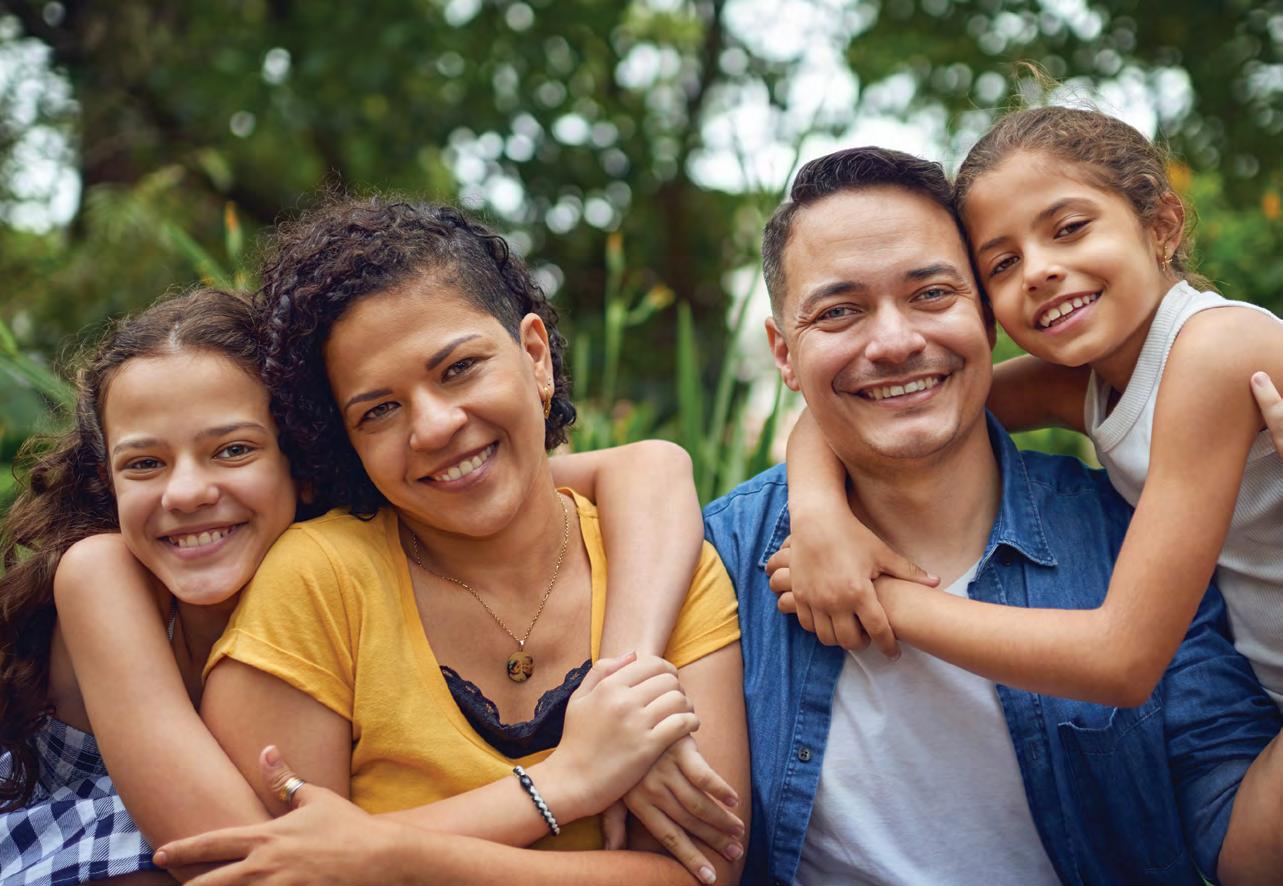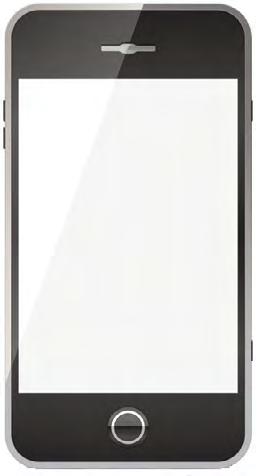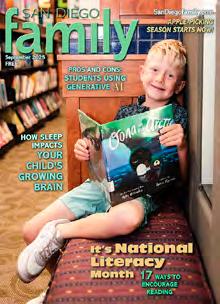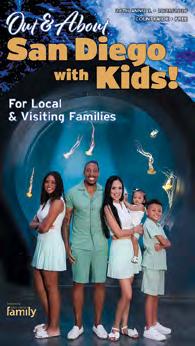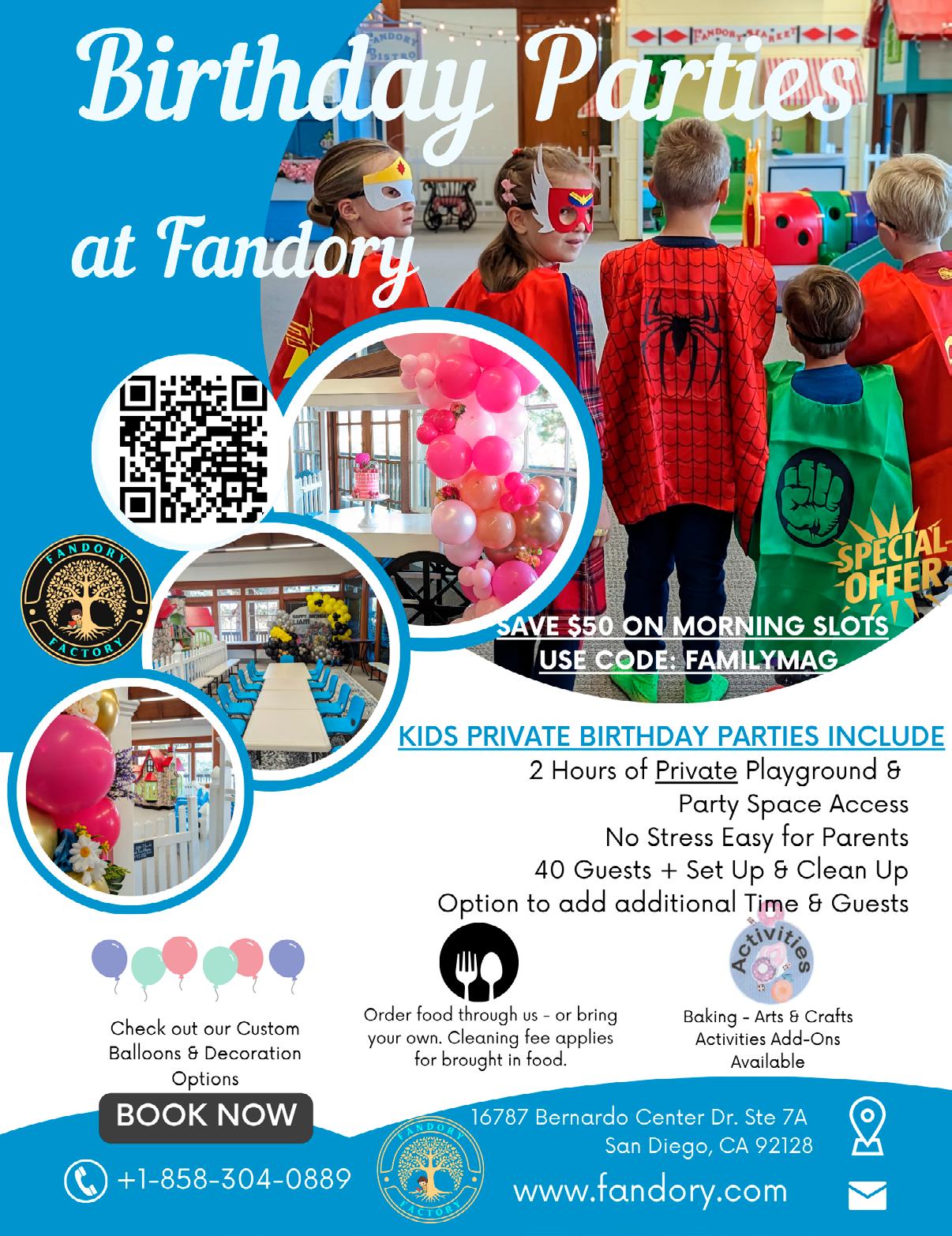San





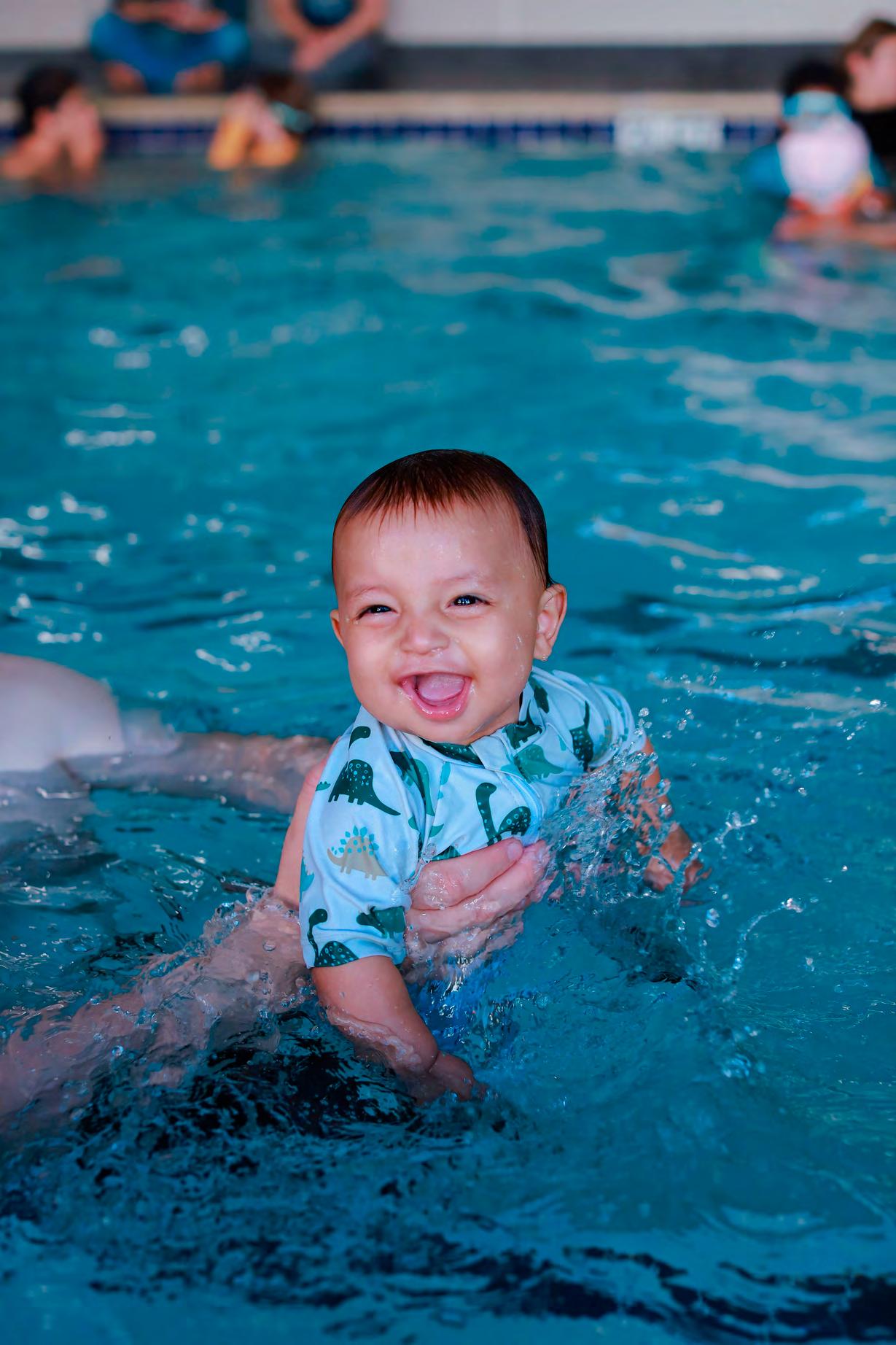
Our infant swim program creates a joyful introduction to swimming through gentle, playful lessons designed just for little ones. In our heated pools with caring instructors, babies learn to be comfortable and safe in the water while you ' re right there with them every step of the way.


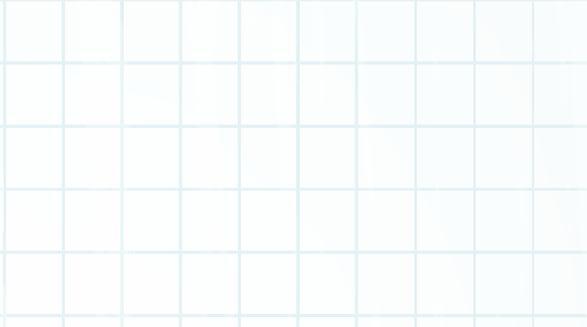
In the first five years, children develop 90% of their brain. It is critical to talk, read and sing to your baby every day—one word, one song and one smile at a time make a lasting impression that fuels their growth and development for a bright future.
Here are five simple ways to build your child’s brain every day:
Games like “Simon Says” make learning fun— connecting words, actions and objects while building memory and motor skills. 1 2 3 4 5
Conversations create connections in your baby’s brain, and every high-quality interaction builds a stronger foundation.
It’s never too early to begin reading. If your baby chews the pages or your toddler asks for the same book, reading together sparks a lifelong love of books.

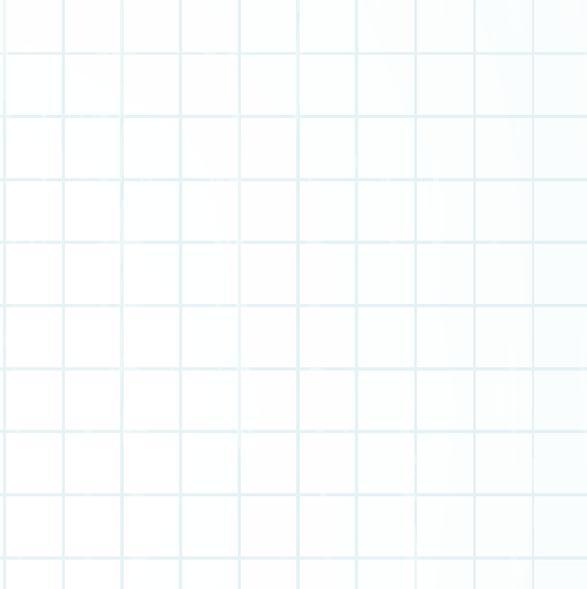
Songs, rhymes and rhythms boost language and literacy—the building blocks for all learning.
Your expressions teach communication. Respond to coos or claps and use smiles and gestures to encourage interaction.
Everyday moments add up. Start today to help your child be ready for kindergarten—and for life.
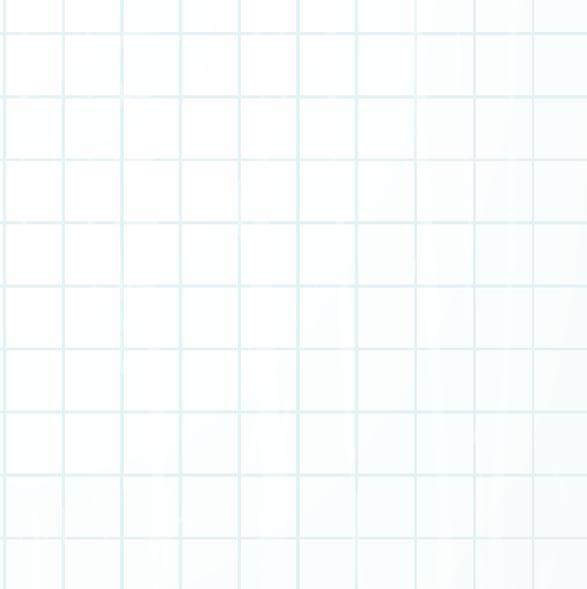
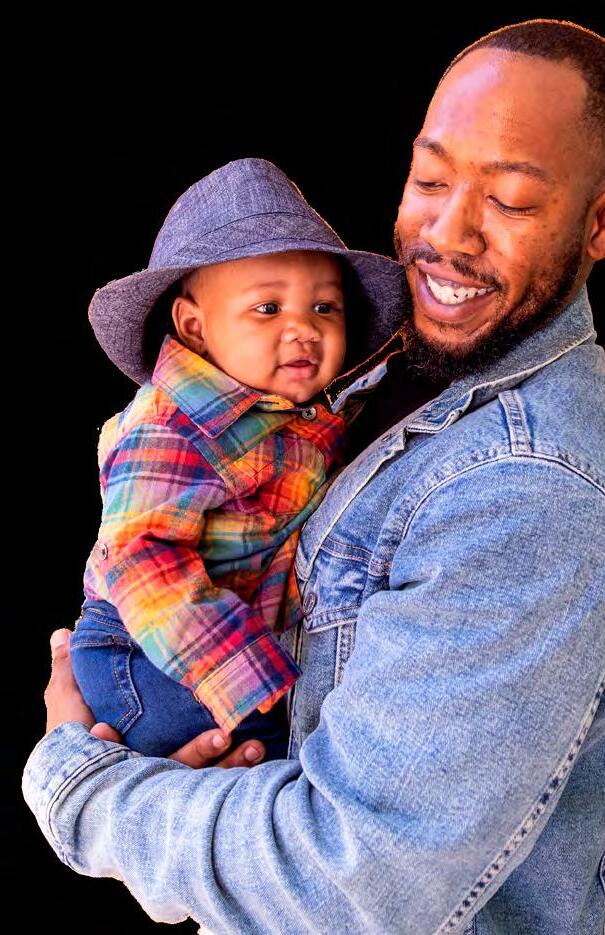
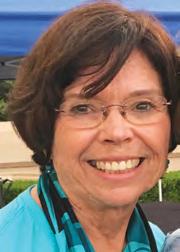
Our annual San Diego Babies and Toddlers publication is here with helpful editorial content and valuable resources for families raising young children.
One of our featured articles (“Mindful Parents”) offers excellent guidance: Be mindful and connected with your baby. This doesn’t mean being with them 24/7; rather, it’s about being truly present, without a phone in hand or your mind elsewhere. Connection matters most. Take time to enjoy the simple, beautiful moments: eye contact, smiles and giggles.
Parenting doesn’t come with a guidebook, and none of us will ever be perfect parents. All we can do is try our best; if today isn’t the best, aim to make tomorrow a little better.
Traveling with little ones can be challenging, but with patience and tips in the article “Oh, the Places You’ll Go,” car and airplane rides can be more enjoyable. I always feel for parents of babies during takeoff and landing, as ear pressure can be so uncomfortable. Sucking on a pacifier helps ease a baby’s discomfort. Flip to page 24 for more tips.
When it comes to potty training, find great guidance from professionals and experienced parents on page 20. Discover what signs to watch for that indicate your child is ready. There’s even a helpful Bluey episode about milestones! Relax and enjoy each stage as little ones grow; potty training will happen sooner or later. (Thankfully, unlike a puppy, the process doesn’t last forever!)
Don’t miss our roundup of baby and toddler products on the market. There are some exciting finds this year!
Finally, thank you for reading our digital publication. Email feedback to family@sandiegofamily.com; we love hearing from our readers. Remember to support our wonderful advertisers by letting them know you appreciate their products and services.





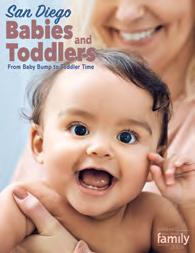
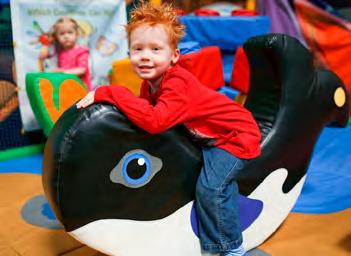
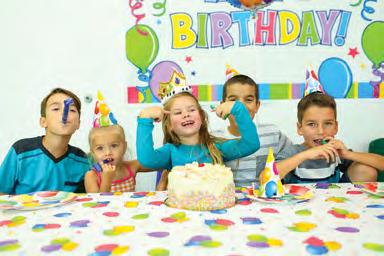


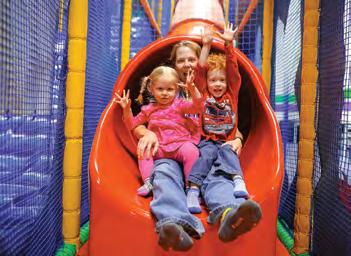
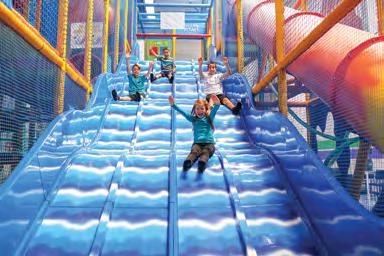


Get to know SanDiegoFamily.com, where you’ll discover these articles and a plethora of awesomeness for parents.
All About Birth Plans
Advice from a labor & delivery nurse
The 4-1-1 on Fitness for Moms
Exercise during and after pregnancy
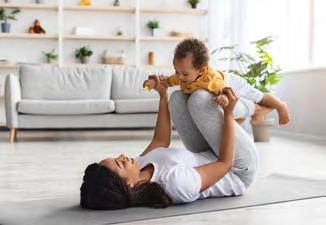
Helpful or Harmful?
What parents need to know about screen time for babies and toddlers
Understanding Postpartum Depression
Signs and steps to recovery
Keepsakes and Milestones
Thoughtful ways to commemorate baby’s special moments
A Guide to Finding Childcare
Where and how to start
If you’re not sure if your child is meeting developmental milestones or need support for a variety of unique and special needs, please tap into the resources in Flourishing Families
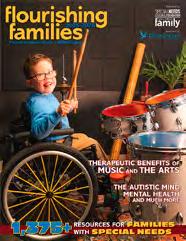
The importance of reading to little ones is paramount and it’s never too early to start. Reading offers cognitive, behavioral and social-emotional benefits, including language development and improved listening skills as babies and toddlers learn to process emotions, gain a broader understanding of how language works, and develop empathy and imagination. Reading also provides priceless bonding time with loved ones. A few quick reading tips:
• Establish a routine. Reading before bed helps baby learn that it’s time to slow down.
• Point to pictures, name objects and notice what baby responds to.
• Use a variety of voices to help baby learn meanings and emotions with different tones.
Read more about how interactive storytelling supports social-emotional learning (SEL) and literacy development at www.sandiegofamily.com/ resources/education-directory/readingto-kids-supports-social-emotionallearning.
If you just had a baby, kindergarten may feel light-years away, but it’s not too soon to register for the “1,000 Books Before Kindergarten” program, an easy and fun way to keep prereaders on pace with story time and literacy skills development before starting school. If you have a toddler, it’s also not too late to register! Visit www.sandiego.gov/1000books for details.
Discover more tips and resources to help raise avid readers at www.sandiegofamily.com/resources/ education-directory/how-toencourage-kids-to-read.
Now is the perfect time to start developing a love of reading with an inspired book collection that reflects a variety of stories, emotions and diverse characters. Consider starting with board books and Indestructibles
(a brand name for chew-proof, ripproof and drool-proof books made with non-toxic materials). Keep them within baby’s reach, while putting a few special picture books on a higher shelf.

There are many Indestructibles titles to choose from! Mommy and Me by Stella Hong is a celebration of mama and baby pairs at the zoo.

My First Milestones: Ready to Walk by Lee Wildish is a fun board book for babies learning to take their first steps.

The special edition of New York Times bestseller The Wonderful Things You Will Be by Emily Winfield Martin includes blank pages for notes and mementos.
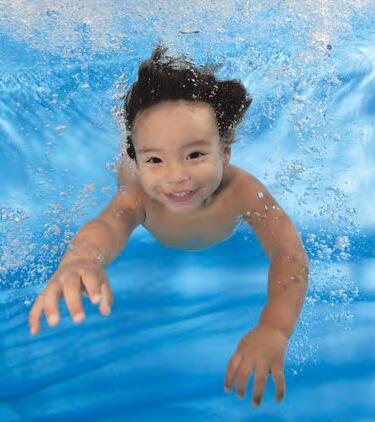
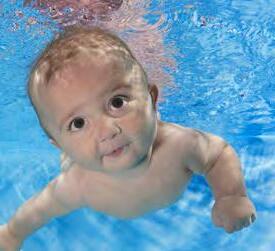
Jennifer Garcia
Having a child changes the way you view the world. Suddenly, you’re thinking beyond your own life, wondering how things will be for your little one in the coming decades. As stewards of the next generation, we have a responsibility to conserve natural resources, protect the environment, reduce our ecological footprint and teach children to do the same. Enter: sustainable parenting, also known as green or eco-friendly parenting.
“Sustainable parenting relies on small lifestyle changes and conscious consumerism,” says Maren Kavanagh, education coordinator of I Love a Clean San Diego (ILACSD). “It’s also about the values you instill in children as they grow up in a world that looks very different from when you were their age.” The best way to lead is by example. By reducing waste, we arm children with tools to do better than the generation before them.
“My child wants to do whatever she sees [us] doing—at least at this age,” say Hana Yaw of Rancho San Diego. “I believe we are harnessing her interests for good now, so they become lifelong habits.”
While making an impact may seem daunting, the focus should be progress, not perfection. To help, we’ve compiled practical tips for new parents who want to “live green.”
The Seven R’s
It’s common to throw things away without thinking about where “away” is. Most people are aware that trash ends up in landfill, but an “out of sight, out of mind” mentality contributes to overwhelming demands on the
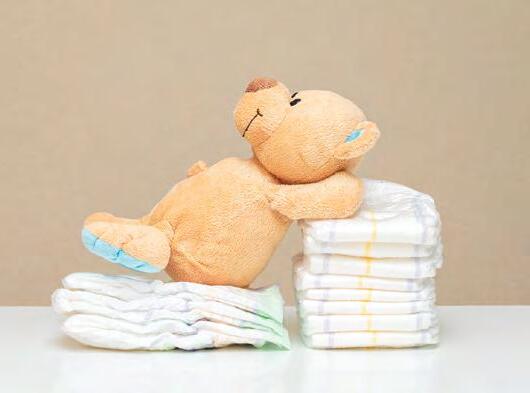
environment. According to the city’s official website, San Diego disposes of approximately 1.58 million tons of trash each year.
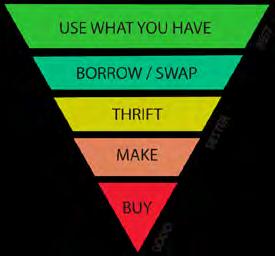
One of the most significant changes we can make is to buy less. Most estimates suggest that over 65 percent of greenhouse emissions worldwide come from household consumption.
Here are seven R’s of waste, listed from most preferred to least:
Refuse: The most sustainable product is the one we don’t buy.
Reduce: Be realistic about wants versus needs.
Reuse: Reusable is always better than single-use.
Rehome: Thrift shops are great, but donating to churches, shelters and other charitable organizations is better.
Repair: If you don’t know how, YouTube it!
Recycle: TerraCycle’s Zero Waste Boxes offer options for recycling just about anything.
Rot: Throwing things away is the last resort.
Find local spots to donate, recycle, repair or properly dispose of specific items by entering details at www.WastefreeSD.org.
According to the county’s Department of Public Works, 40 percent of what is discarded in landfills is organic waste. California Senate Bill 1383 (effective Jan. 2022) aims to change that by requiring residents and businesses to recycle and reduce organic waste. Here are ways to do that:
• Compost. If you have a green organic waste bin, participate in San Diego’s Organic Waste Recycling program by placing food scraps and food-soiled paper in it.
• Breastfeeding? Consider reusable breast milk storage bags and washable nursing pads.
• Make baby food, when possible, to avoid plastic waste and exposure. If purchasing, opt for products in glass jars. Avoid single-use squeeze pouches as they are harsh on the environment. Make your own by steaming and pureeing fruits and vegetables and utilizing reusable pouches.
• Baby-led weaning is a great practice for reducing single-use containers.
• Make food accessible by storing it in see-through containers. Store food that’s about to expire towards the front of the fridge or cabinet so that it gets used first.
High-quality, responsibly made products from KeaBabies support sustainable parenting! Visit www.keababies.com for details.
Did you know that it takes hundreds of years for traditional disposable diapers to decompose? Here are alternatives:
Biodegradable diapers: While some diapers are marketed as “eco-friendly” or “biodegradable,” these diapers need high heat and oxygen to break down. Cramped landfills and diapers tied up in bags make this difficult, but they are better than traditional disposables.
Cloth diapers: While the average child uses well over 4,000 disposable diapers in their lifetime, that number for cloth diapers is 20–30 because they are used, washed and used again. Many sustainable parents use cloth diapers during the day and biodegradable diapers at bedtime to combat nighttime leaks.
Baby wipes: Wipes of any kind don’t decompose easily. If you aren’t keen on using reusable wipes for diaper changes, at least try reusables for kitchen clean-up.
Elimination communication: The practice of using baby’s bodily cues and audible signals for early potty training, starting as young as 3-4 months old.
The same things that make plastics great—versatility and durability—are what makes them hard on the planet. Research shows that overexposure to plastics has caused disruptions

to hormone and endocrine systems. In addition to using products with minimal packaging:
• Use reusable water bottles for little ones. Pura Stainless offers a great plastic-free option that grows with kids. One bottle accommodates multiple lids, including bottle nipple, sippy top and straw top.
• Think long term. According to ILACSD, over 180 million pounds of car seat material end up in landfills each year. Convertible car seats grow with children. When they are ready for a booster seat, look into local car seat trade-in events.
According to the British Fashion Council, there are enough textiles on the planet to clothe the next six generations! Yet, textile consumption continues to rise. Production contributes significantly to global water pollution and excessive landfill waste. So, what can parents do?
• Choose quality over quantity. Some brands, like Patagonia, offer lifetime warranties to ensure quality over time. On the flip side, avoid fast fashion: cheap, mass-produced clothing that promotes short-lived trends and seasons. Also avoid synthetic materials, which release microplastics into the waterways during laundering and are not biodegradable.
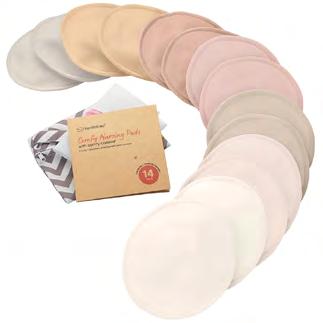
• Upcycle. Kornelija Newcomer is a San Diego-based clothing designer who uses hand-painted art to create one-of-a-kind upcycled garments. Through her business, Korn Upcycled, she offers DIY patches, custom mail-in services, live popups, upcycling workshops and an upcycling guide for beginners. Readers can receive the guide by entering WEARUPCYCLEDSD at www.kornelijaart.com.
• Mend: Mini stitch guns make alterations quick and easy. And stitches can be removed (if needed) as your child grows. Check out #visiblemending on IG for tutorials.
• Buy second-hand: Not just clothing, but equipment, educational toys and play items. Local and online options include The Baby Exchange, The Baby Resale, BuyNothing, OfferUp, Facebook Marketplace, Mercari and Poshmark.
• Recycle. Fabrics can’t go into blue bins, but check into specialized textile recycling programs like Nike’s Reuse a Shoe, Retold Recycling and For Days Take Back Bags.
For more information, including webinars and community events, visit www.cleansd.org. v
Lakeside mom Jennifer Garcia is a freelance writer, photographer and graphic designer, whose family sustains balance through applied—yet imperfect—actions.
Whatever the reason or the season, we are dedicated to the overall health of your child, every step of the way.
With locations throughout San Diego County and Southern Riverside, it’s easy to find just the right pediatrician for your child. From routine vaccines, well-check visits and everything in between, we are dedicated to providing expert care for newborn babies to collegebound teens. In partnership with Rady Children’s Health Network, our commitment will always be to help you raise healthy, happy kids.
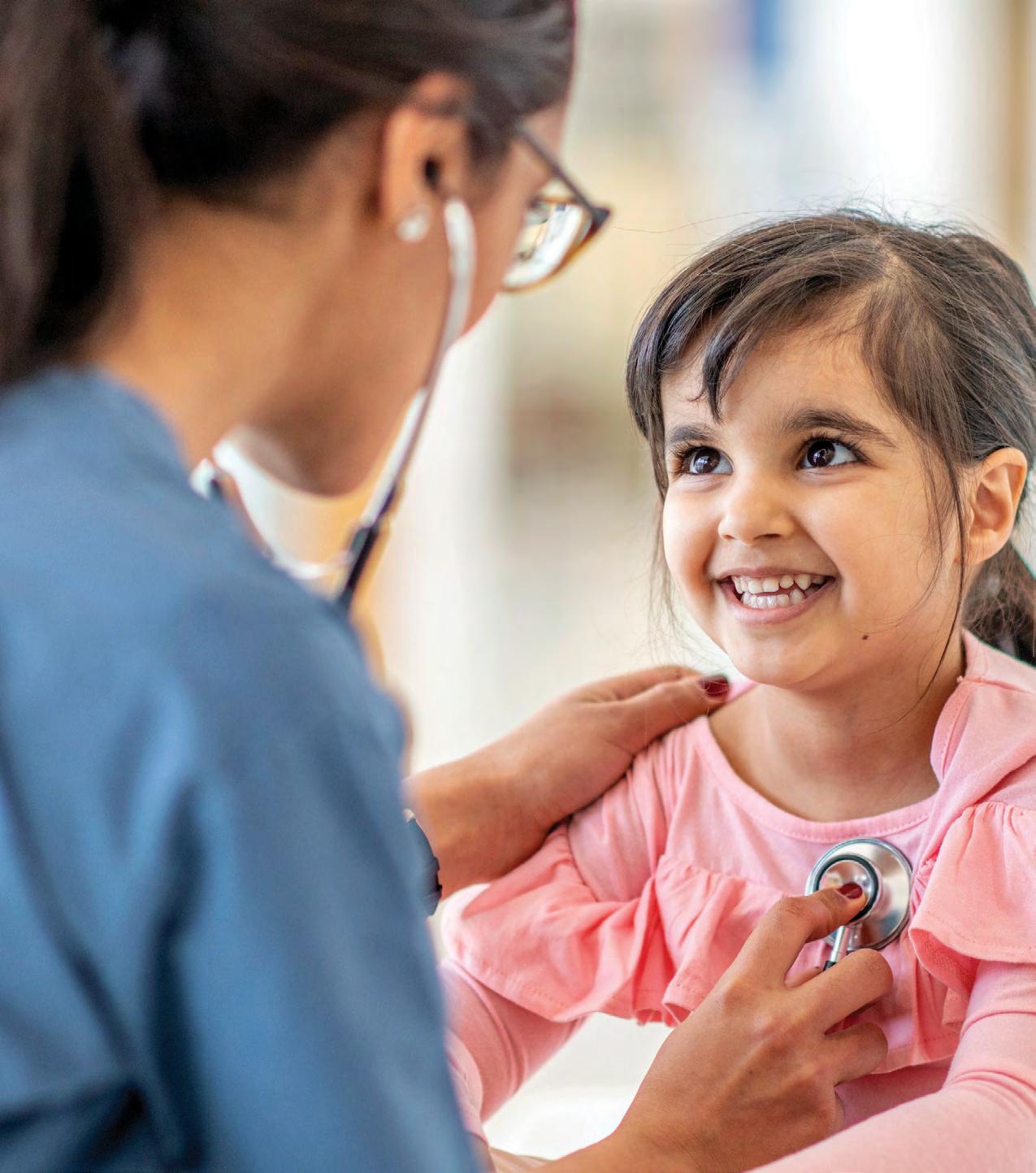


by Gina Rosenfeld, MD

Regardless of the reason for your visit, pediatricians frequently find a way to ask about and discuss the importance of sleep. Sleep is an important topic to discuss as it plays a key role in physical and mental function at every age.
How you feel, act, react, learn, and work in part depends on what happens when you sleep.
How you feel while awake depends partly on what happens while you sleep. During sleep, your body supports healthy brain function and maintains physical health. Sleep is not just a restful state for children and teens but a critical support system for growth and development. Inadequate sleep over time can elevate the risk for chronic health problems and impact cognitive abilities, learning, and social interactions. Understanding how sleep affects the body is important for parents to ensure the well-being of their children and teens.
Sleep is vital for children as their bodies and minds develop; it affects every aspect of health. Unlike our body’s quiet physical state, the brain is quite active during sleep, carrying out many vital functions.
So, how much sleep is enough, what are the effects of poor sleep, and what habits are essential to good sleep?
The American Academy of Sleep Medicine offers recommendations for children’s total daily sleep needs by age group. Their recommendations serve as a general target, but it’s important to remember that a healthy
amount of sleep will vary among babies and kids based on various factors, including their temperament and developmental differences.
• Infants aged 4 to 11 months should get between 12 and 16 hours of sleep daily. While some infants may begin sleeping through the night at around 5 or 6 months old, they still obtain a significant portion of their overall sleep from daytime naps. Babies spend more than half of their time sleeping because this is a period of substantial growth.
• Toddlers should get between 11 and 14 hours of total sleep every day. Their napping decreases and frequently accounts for 1 to 2 hours of daily sleep. Preschool-aged children, 3 to 5 years old, should get 10 to 13 hours of sleep daily. Naps may get shorter or even stop on a regular basis.
• School-age children, 6 to 12 years old, should get between 9 and 12 total hours of sleep daily. Insufficient or poor-quality sleep can lead to challenging behaviors, reduced learning and memory retention, and a tendency toward poor eating and growth in young children.
• Adolescents should get between 8 and 10 hours of sleep per night; unfortunately, many do not. Adolescents are often sleep-deprived due to biological changes in their brains, which affect when they feel sleepy. Even if they need more sleep, their brains are not ready for bed early. Research consistently shows that students who get more sleep have fewer motor vehicle accidents, better grades, and improved mental health.
Healthy habits are essential to good sleep. Practicing good habits all year round, even during summer and vacation, is important. Consistency is key!
Remember, as with everything in parenting, you are your children’s biggest role model. Set an example and make sleep a priority for yourself.
• Show your children it’s part of a healthy lifestyle — like eating right and exercising regularly.
• Plenty of daily exercise and fresh air is key to being tired in the evening.
• Keep your kids on a routine; the same waking, meal, nap, and play times will help with a smooth bedtime.
• Start them early with a bedtime routine, such as bath, brush, book, and bed. Ensure your routine can work even when away from home.
• Keep the bedroom dim and cool before bedtime.
• Avoid filling the bed with toys.
• Keep TVs, computers, laptops, tablets, and phones out of your child’s bedroom, especially at night.
• Turn off all screens at least 60 minutes before bedtime.
Remember, by nurturing healthy sleep habits today, you’re not just ensuring a well-rested child, but laying the foundation for a lifetime of thriving health and happiness.

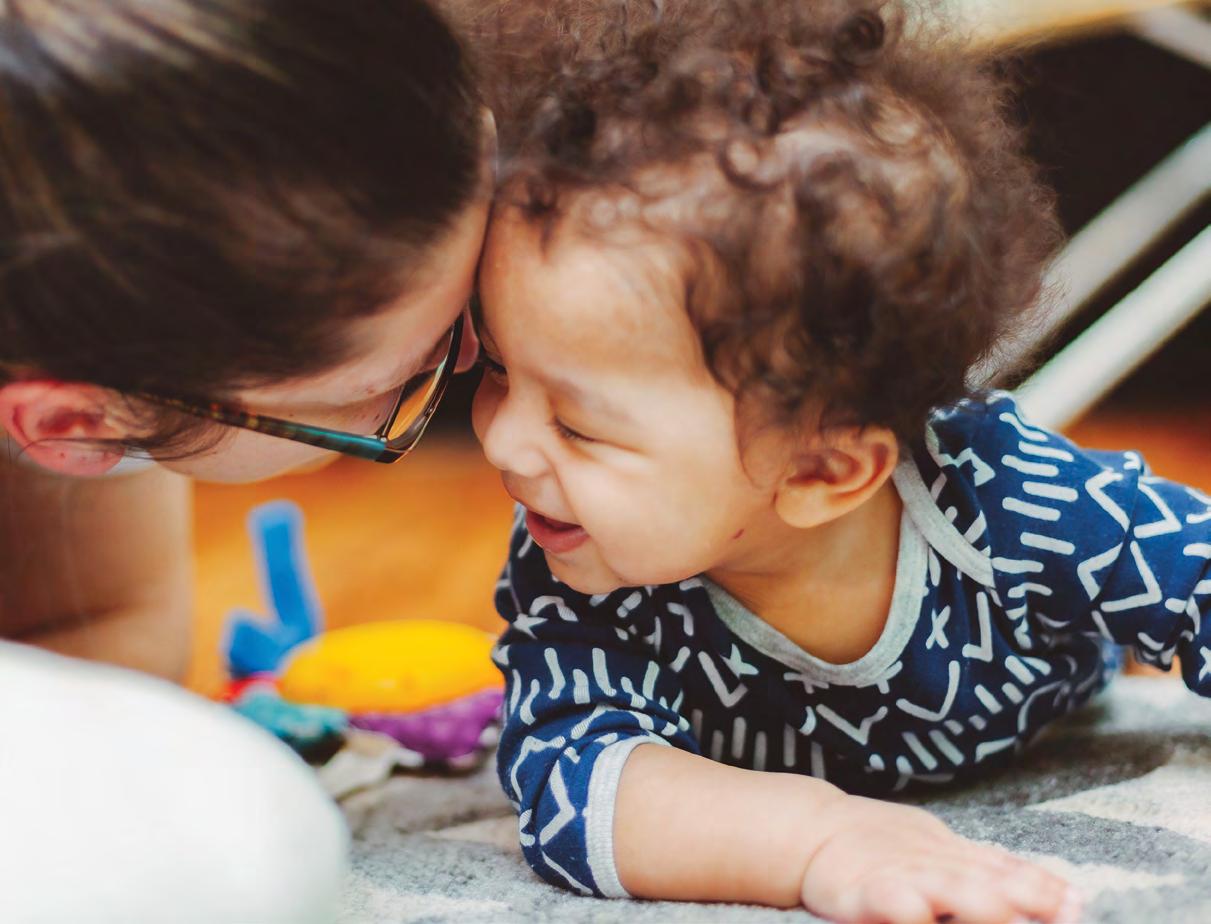
There’s no shortage of parenting strategies: authoritative, gentle, free-range, attachment, lighthouse parenting—take your pick. Just when you think you’ve found your rhythm, a TikTok video about the latest trend sends you into a late-night Googling spiral, wondering if you’re doing anything right.
Then there’s mindful parenting. The name alone elicits visions of a serene parent meditating cross-legged while a toddler plays quietly with sustainably sourced wooden toys. There’s nothing
wrong with that, but being mindful isn’t about remaining calm 24 hours a day. It’s about being present in the everyday chaos of raising kids.
“For me, mindful parenting is about presence,” says Melissa Eisler, an executive coach and mindful leadership consultant at Wide Lens Leadership in San Diego. “It’s noticing your child and the moment you’re in, without rushing to the next task or worrying about getting it ‘right.’”
Mindful parenting is less about what we do and more about how we show up. It’s not a parenting method, but a way of being with your children; with attention, compassion and intention. It’s about slowing down enough to really see them, even if the laundry isn’t folded and you’ve reheated your coffee three times.
Babies don’t come with manuals, but if they did, one of the first lines might read: Connection required. Often. With presence, please.
“Parents who are engaged, present and intentional when their littles are young are more likely to raise children who are secure, with good attachment, and who feel supported and loved,” says Jordyn Koveleski Gorman, a licensed speech-language pathologist and founder of the online parenting resource, Eat Play Say.
Mindfulness does not just pertain to emotions; it’s neurological. “Babies are born with about 86 billion brain cells, but they’re not connected yet,” says Tim McCarthy, author of Raising 4 Dimensional Children in a 2 Dimensional World. “Interaction with people will determine how they are connected.”
The early years are full of rapid brain development. Even small moments, like shared eye contact or a calm hand on baby’s back, encourage trust, empathy and emotional regulation.
Attachment theory supports this. “A parent who is mindful and intentional is more likely to help a child create a secure attachment,” says Molly Zive, a licensed clinical social worker in San Diego. “Our attachment style throughout our lifespan is determined by primary caregivers in the early stages of development.”
The Challenge: Being Present in a Hyperconnected World
Theoretically, being present sounds simple. But in reality, it’s hard to hold space for connection when the phone pings, the laundry’s buzzing, and your toddler is throwing toys at the dog.
“[Sometimes] I catch myself scrolling while my child is tugging on my sleeve,” Eisler says. “Mindfulness gives me that pause: ‘Oh, I’m distracted right now.’
From there, I get to choose—do I want to keep scrolling, or do I want to look into their eyes and join them in hide and seek?”
Technology isn’t the villain, but how we use it matters. “Put down the
phone!” says Zive. “We are consumed by smartphones and the desire to document everything, but this is not fair to children. If you’re spending time with your child, leave your phone in another room.”
It’s not about guilt, it’s about awareness. “Parental stress and distractions are normal,” says Karen Aurit, a mindfulness expert. “But when unaddressed, they can hinder development and potentially cause selfdoubt in children.” It may not seem like the kids are paying attention, but they know when something is off.
The goal isn’t to be glued to the children all day. It’s to show up in moments that count.
Mindful parenting doesn’t require a silent house or an hour of meditation. It’s about quality over quantity. “Mindfulness fits into the cracks of the day,” Eisler says. “A mindfulness practice can be as simple as a few deep breaths while you wait for the bathtub to fill, or slowing down to really feel your child’s hand in yours.”
Koveleski Gorman suggests narrowing the focus. “Instead of trying to be present all day, aim to be present for one activity at a time. Sit face to face during breakfast with no digital distractions. Read books without background noise. Watch your child play without multitasking.”
Simple mindfulness resets include:
• Use the 5-4-3-2-1 grounding technique: Name five things you see, four you hear, three you can touch, two you smell and one you taste.
• Place a hand on your heart and take three deep breaths.
• Touch nature—a plant, pet or patch of grass—to reset your nervous system.
Routine activities offer natural opportunities for connection. “Bedtime is a natural time when parents may be thinking about their to-dos,” Aurit says. “But even brief mindful presence during this routine builds connection.”
(Spoiler Alert: Everyone)
When kids (even babies) feel seen and emotionally safe, they’re more likely to stay calm and regulated. On the contrary, children who don’t receive parental attention may act out or withdraw socially to get it.
“Children ... build their self-worth knowing that the important figures in their lives are there for them—and with them,” Aurit says.
As for parents, mindfulness techniques help adults feel less reactive and more grounded, not just with the kids, but within themselves.
“Parenting is full of mistakes,” Eisler says. “Mindfulness helps us notice when we’re being hard on ourselves. Self-compassion invites us to remember that we’re human, and offer ourselves the same patience and kindness we try to give our kids.”
Yourself Grace
Presence doesn’t mean perfection; it means being there when it matters. Some days, you’ll manage a whole evening of stories and snuggles without your phone. Other days, “Cocomelon” will buy you five minutes to breathe, and that’s OK.
“There’s no guidebook on how to parent the ‘right’ way,” Aurit says. “Staying present helps us manage daily challenges, but it’s OK if we don’t get it perfect.”
When the day feels like it’s falling apart, Koveleski Gorman asks herself, “How can I take back this day?” The answer might be a dance party, reading for 15 minutes or stepping outside for a breath of fresh air.
Mindful parenting doesn’t require constant calm and seamless routines. Choose connection and show up with intention, even when things feel hard or messy. v
Maile Timon is a copywriter and content strategist living in Poway with her husband and two boys. When she’s not writing, she enjoys CrossFit training, hiking and spending time with family.
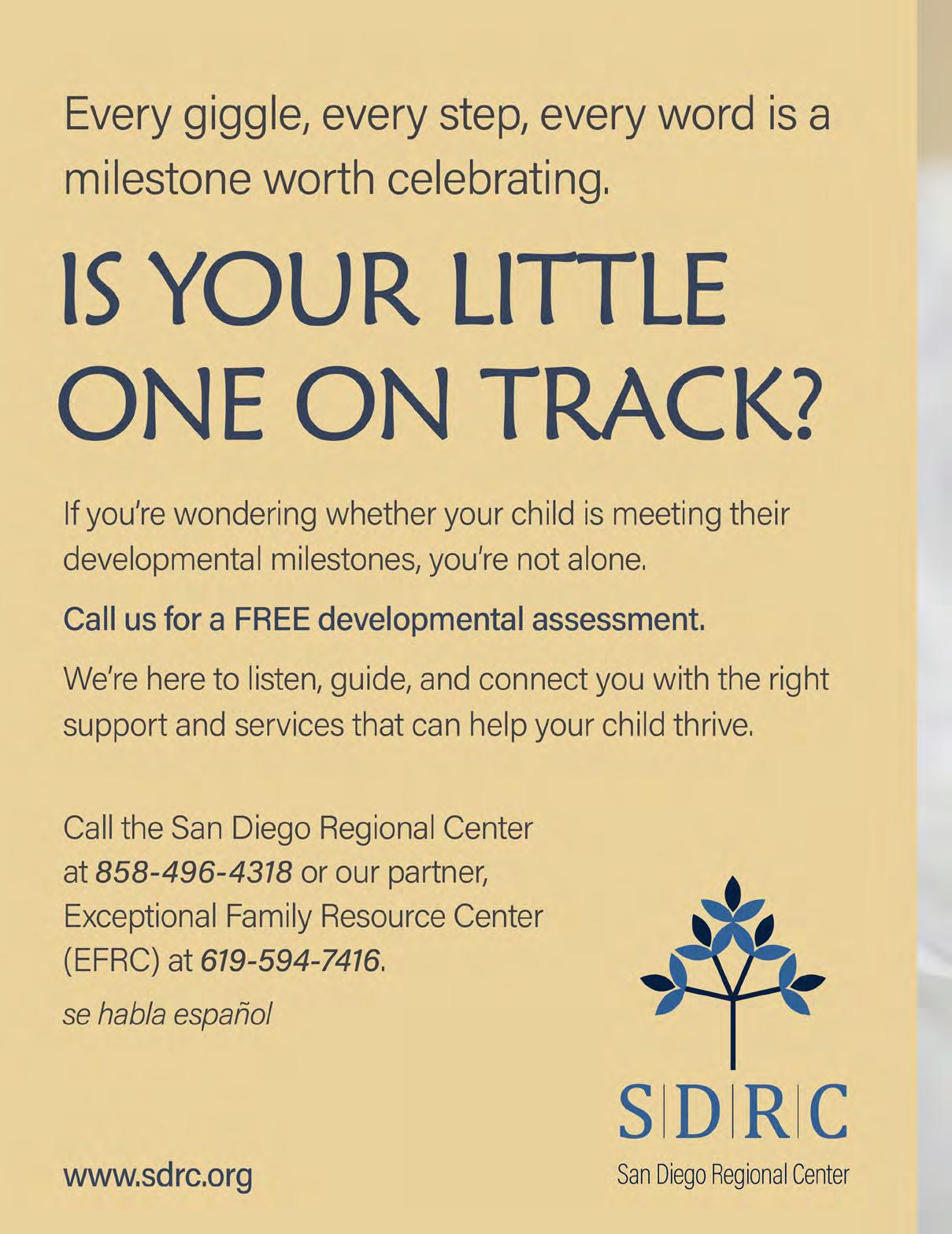

Katie Ferraro, MPH, RDN

Starting solid foods is a fun and exciting transition for families, but it can also be stressful. Just when it felt like feeding was under control, the thought of introducing solid foods prompts so many questions: How do I know if baby is ready? What are safe foods to try? Will my baby get all the nutrition she needs?
This is where the baby-led weaning approach is helpful. If you’ve heard of it, but aren’t sure what it is or how to do it, you are not alone! Read on for answers to questions about baby-led weaning.
Baby-led weaning is an approach to starting solid foods where babies learn to feed themselves wholesome, safe foods offered by parents and caregivers. It’s a responsive feeding method that supports a baby’s inborn ability and desire to be an active participant in the transition to solid foods. Babyled weaning is an alternative to conventional, adult-led spoon feeding.
The baby-led weaning movement was started by Gill Rapley, PhD, a British health visitor and co-author of the original baby-led weaning book, Baby-Led Weaning: The Essential Guide. Rapley advocated for waiting until babies are 6 months old and demonstrating reliable signs of readiness to eat before starting solid foods.
While baby-led weaning is a relatively new term and parenting phenomenon, the philosophy is actually millennia old. Different cultures and ethnic groups around the world have historically offered (and continue to offer) babies modified versions of foods the rest of the family eats.
As a modern parenting approach, baby-led weaning is of growing interest to today’s parents. A recent Babylist survey found that 83 percent of parents said they plan to try baby-led weaning
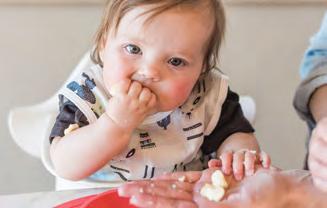
when their baby starts solid food. The focus is on allowing babies to learn how to eat, with less emphasis and pressure on how much babies are consuming. Benefits of baby-led weaning include:
• Increased feeding autonomy
• Participation in family meals from baby’s first bites
• Reduced risk of picky eating in toddlerhood
• Decreased risk of food allergies due to earlier exposure of potentially allergenic foods

No matter what approach you choose to start solid foods, breastmilk or infant formula continue to be the primary source of nutrition during the weaning period.
A number of pediatric studies show that babies who start solids with a baby-led approach are at no higher risk of choking than conventionally spoonfed babies, provided that parents and caregivers are educated about choking risks and how to avoid them. Baby-led weaning babies are also not at risk of slow weight gain or lack of nutrients, as long as caregivers provide a variety of healthy and nutritious foods.
Three important steps to lower the risk of choking:
1. Wait until baby is ready to start solid foods (see “Reliable Signs of Readiness”).
2. Position baby safely in a high chair with feet resting flat on a solid footplate (see photo above).
3. Prepare finger foods appropriately for baby’s age and stage.
Most babies are ready to start solid foods when they’re around 6 months old. One of the most important reliable signs of readiness is baby’s
ability to sit up on her own. Babies sitting independently is their way of demonstrating that they have the trunk strength and head and neck control to support safe swallowing.
Around 6 months, baby will also show interest by reaching for your food and by bringing other objects to her mouth. Parents of babies born prematurely generally wait to introduce solid foods until the baby’s 6-month adjusted age and baby is able to sit up on their own.


From a developmental standpoint, 6-month-old babies can pick up larger pieces of food and safely self-feed. In the earlier part of the weaning period (6–9 months old), babies use their whole hand or palmar grasp to rake and scoop pieces of food up and into their mouths.
Baby-led weaning foods are generally offered as soft pieces of food shaped and sized similarly to an adult pinky finger. Longer strips of soft fruits and vegetables, shreddable strips of meat, and cooked whole grains in the form of fritters or pancakes are great for early

Ezra (7 mos.) tries duck for the
eaters. When older babies (9–12 months old) develop a pincer grasp, they can safely self-feed smaller pieces of food. Baby-led weaning does not mean skipping purees. Purees are an important texture for babies to master—it’s just not the only texture babies can handle. Research suggests that babies who have had the least amount of practice with finger foods are at elevated risk of choking. Families can honor self-feeding principles of baby-led weaning and still offer pureed foods (such as yogurt or whole grain cereal) using the preloaded spoon approach. This is when a parent or caregiver loads food on a baby-led weaning spoon and passes it to baby, who eventually learns to self-feed.
To learn more about baby-led weaning, register for a free one-hour online workshop called Baby-Led Weaning for Beginners, where participants receive a copy of my original “100 First Foods” list (never run out of ideas of new foods for baby to eat!). Register at www.babyledweaning.co and click on Free Workshop. v
Katie Ferraro is a registered dietitian who specializes in baby-lead weaning. She lives in San Diego with her husband and seven kids. Learn more at www.babyledweaning.co. All photos provided by author.
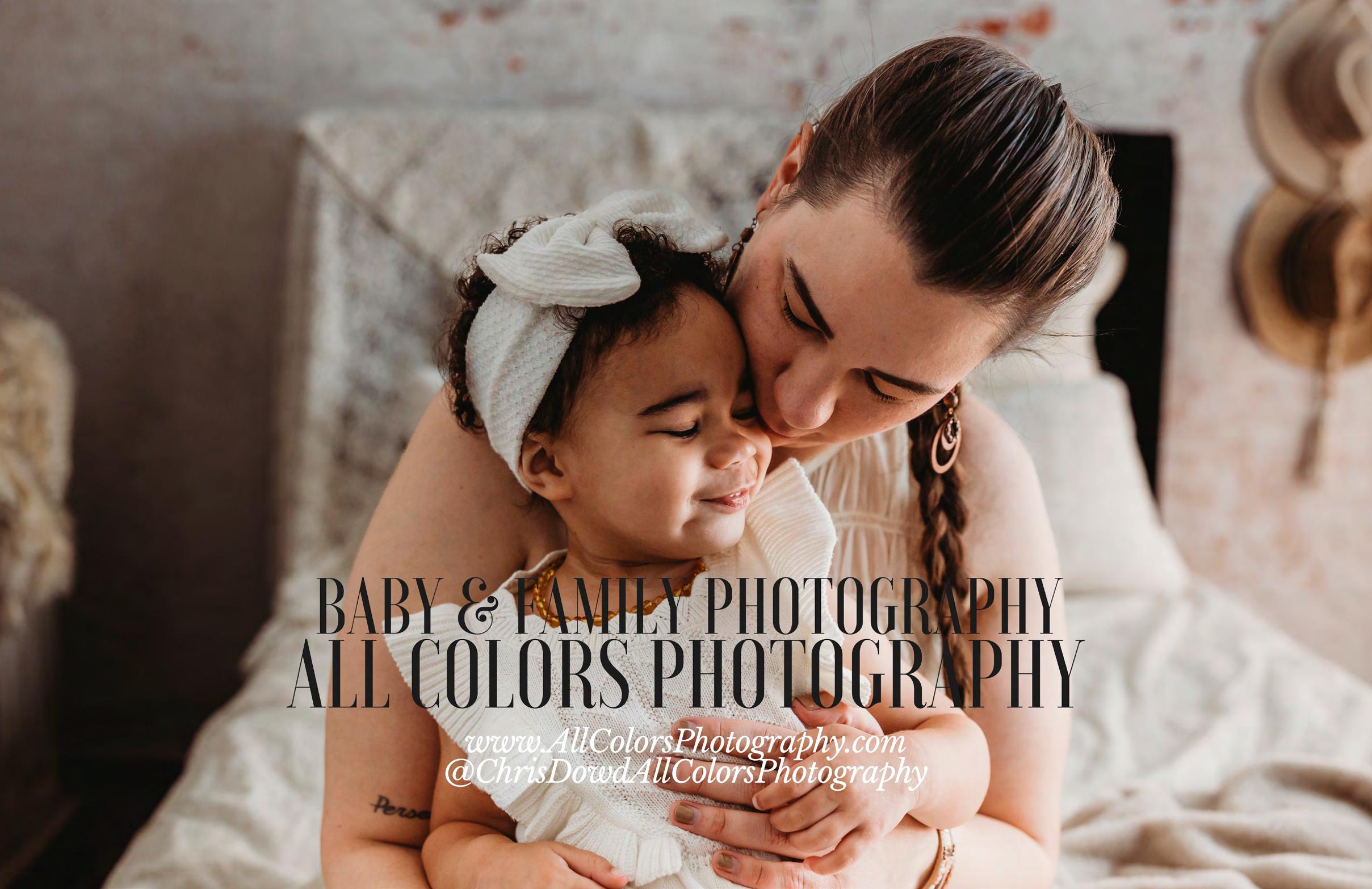

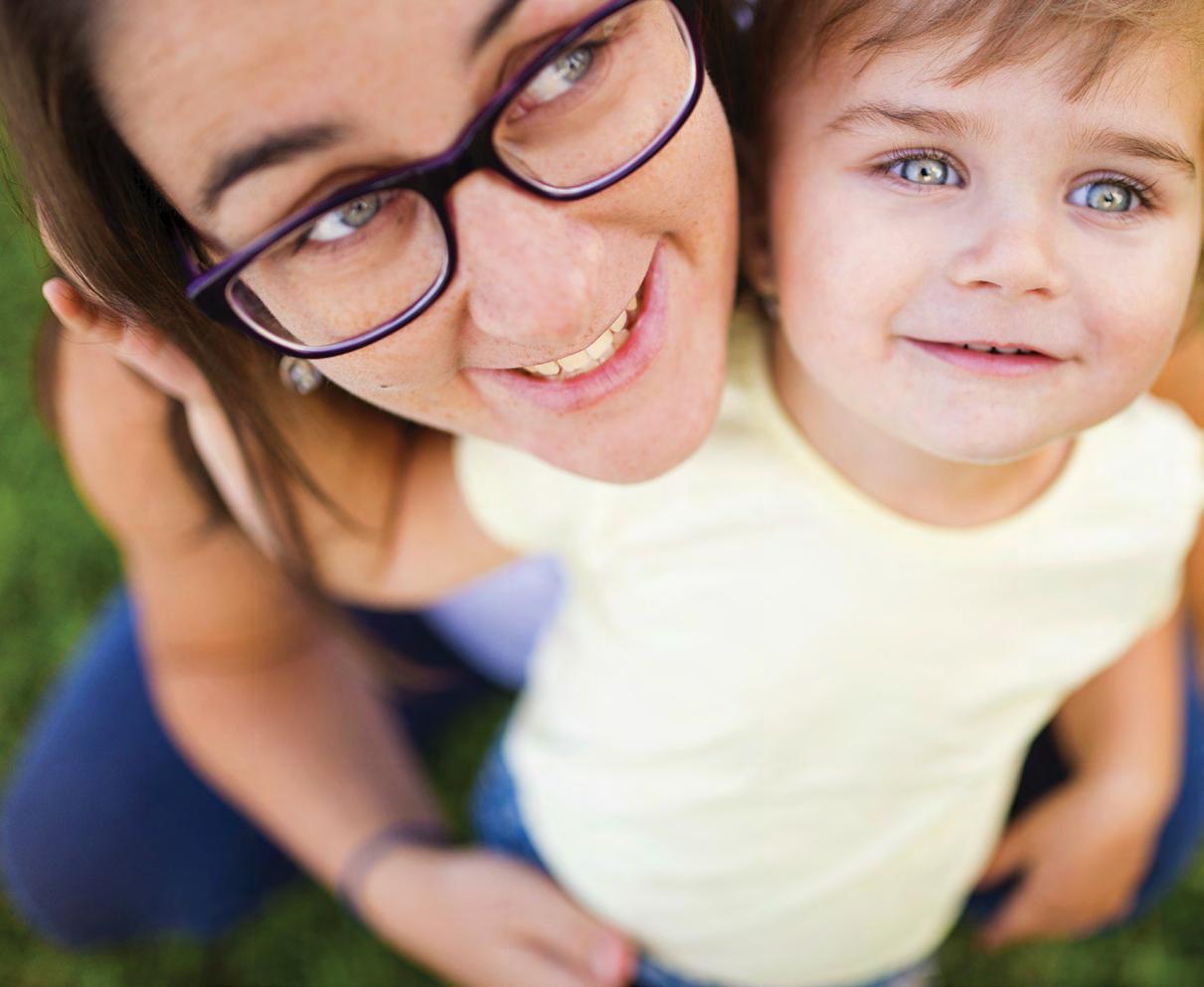
Our experience with the three-day method
Ah, the infamous “p-word.” Pottytraining is a milestone each child must conquer, yet it feels more like a monumental boulder. All the buzz is around the three-day potty-training method, an approach that has gained popularity over the past decade. There are a few variations, but the premise is the same: Spend three days closely supervising your bare-bottomed toddler, focusing on bodily cues and frequent trips to the bathroom. As a first-time mom, three days sounded
great to me. So, I dove right in. Here is the introspection that followed:
Confession #1: I thought my kid would be super easy to potty-train, and I was secretly ready to brag about it. My inner dialogue already had the conversations planned out: “Don’t feel bad about Junior’s timeline, Karen. My kid just picked it up freakishly fast!”
I read the books, watched the videos, set aside a three-day weekend, and (much like I did with my birth plan and breastfeeding) I completely
underestimated how hard it would be. I optimistically thought we were three days away from ditching diapers for good. Boy, what a gut punch I was in for.
“It’s not three days and you’re done… miraculously trained,” says Megan Trejos of Alpine. “To me, it’s more like a beginning to potty training.”
Halfway through our weekend it was clear that we hadn’t made any progress, which brings me to my next point.
Revelation: It’s OK to take a step back and try again later. Many three-day
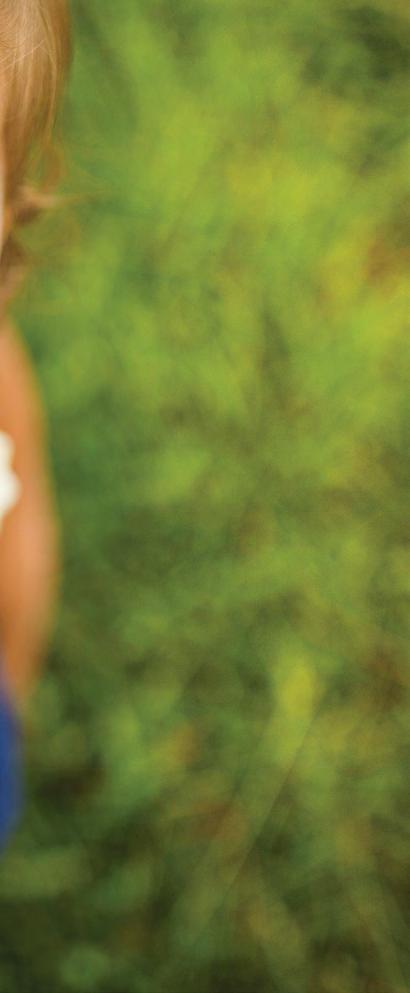
programs say the best age to train is 20–30 months old. But at 24 months, we found our son didn’t have the focus, communication or attention span to succeed.
“Potty training is super easy if you have a kid who’s ready,” says Dr. Regina Mangine, a pediatrician with Children’s Primary Care Medical Group in San Diego. “It only takes one day if you pick the right day. And those three-day ‘boot camps’? If they are a failure, it just means [the child isn’t] ready yet.”
So, what constitutes a child being ready? According to Dr. Mangine children need to demonstrate a desire to keep clean, the ability to recognize the sensation of having “to go,” and be able to communicate that need. All things my son hadn’t yet developed. The three-day approach worked for my friend’s kid at 24 months. Why wasn’t mine getting it?
Confession #2: I was comparing my kid to others. It’s hammered into our psyche over and over: All kids learn at different speeds and comparing ours with anyone else’s causes unnecessary anxiety and pressure.
There is a really great “Bluey” episode about this titled “Baby Race” (Season 2). The episode follows baby Bluey and her mom Chilli as they navigate rolling over, sitting up, crawling and walking. Bluey rolls over at a very young age, much younger than any of her friends, but is quickly surpassed in other milestones. It’s hard for Chilli to watch, so she consults their doctor, reads books and tries multiple methods to encourage Bluey’s development. But the more she pushes, the more she’s met with disappointment. In the end, Bluey meets her milestones, but she does it on her own terms and in her own time. While the subject matter isn’t exactly the same, the encouraging lesson for parents is there.
Revelation: Parenting and potty training are not one size fits all. My husband drives me crazy. OK, that’s an unrelated confession, but the point is that sometimes he has tunnel vision when it comes to “the right way” to do something. I often remind him that what works best for him might not be what works best for me. That same logic can be (and should be) applied to my toddler and his bathroom habits.
Just because the three-day method worked for others at 24 months doesn’t mean my kiddo was ready. Dr. Mangine says the average age for potty training is between 2 and 3 years old, with boys tending to be closer to 3. Simple factors such as gender can influence a child’s
readiness to learn. Different learning styles, personalities and eagerness to please are all part of the equation.
Confession #3: Our struggles are more of a reflection on me than my son. Three-day potty-training programs say to devote an entire weekend to your child’s bathroom cues, but I found this incredibly difficult. Call it ADHD, too much caffeine, or just a mom with a million things to do, but I found myself distracted by laundry, cleaning—even organizing.
If I’m honest, the reason we haven’t given the three-day program another shot is because it has been incredibly hard to find a weekend with nothing going on. Our schedules are busy, and the inability to set aside the time and focus isn’t a “him” problem. It’s a “me” problem.
But it’s not just a lack of time; it’s a lack of consistency and routine. Some days I’m great about nudging him to sit on the potty. Other days I’m not.
“Parents need to be ready to guide and lead for success,” says Trejos, noting that most of her son’s accidents stem from her own lack of preplanning and alertness.
Revelation: Do what works. We learned some things from our three-day experience and can utilize the elements that make sense for us. Right now, we are on a really good roll and doing what our son responds best to.
In the aforementioned “Bluey” episode, Chilli tells an older Bluey, “We were all learning to do things for the first time. I just felt like I was doing everything wrong.” Eventually it’s a mom of nine kids who eases Chilli’s mind, saying, “There’s something you need to know. You’re doing great.” Now, I’m no expert, but I’d guess that you are, too. v
Jennifer Garcia is a photographer and freelance writer in East San Diego County. Lately, most days are spent celebrating small wins and cleaning up puddles.


CWelcome to personalized pediatric care in a modern and comfortable environment. Our practice style allows us to remain small so that we can form long-term relationships with families and really get to know each child. We offer convenient access, continuity with your doctor, and same day appointments. Join us as we elevate pediatric care in San Diego!
oast Pediatrics 4S is up and running and accepting new patients! This office has the same small-practice model that our community has embraced at C Pediatrics Car m
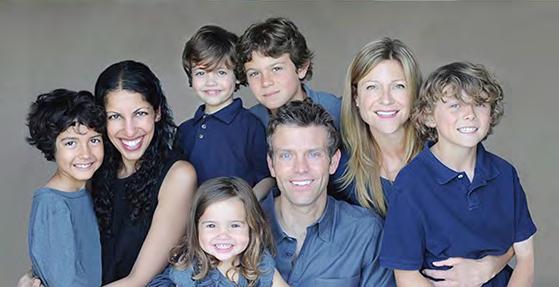
Our practice s we can for m lo and really get t convenient access, continuity with your doctor, and a technologically advanced office. Join us as we
Shakha Gillin, MD • Robert Warner, MD • Lori Taylor, MD Founders, Coast Pediatrics
membe helping


Dr. Alecia George
Our 4S Ranch office welcomes our newest Pediatrician, Dr. Alecia George. Before relocating to San Diego, Allie practiced general pediatrics in Atlanta, Georgia, and Alexandria, Virginia. She has a special interest in infant and toddler care, sports medicine, and supporting children with special healthcare needs. She is conversational in medical Spanish and is dedicated to providing inclusive, family-centered care. Allie is passionate about building lasting relationships with her patients and their families. She enjoys partnering with parents to help them make informed, confident decisions about their children’s health and well-being.
Dr. Alecia George is currently accepting all new patients.

Raha Shaw, MD
Raha has practiced pediatrics in San Diego since 2007. Though she has worked in the Emergency Room at Rady Children’s Hospital and the newborn nursery at Scripps Memorial Hospital Encinitas, her heart is in primary care where she cares for children and adolescents of all ages. She practiced in a general pediatrics clinic in Carmel Valley for nearly 15 years, and is very excited to join the fabulous team at Coast Pediatrics. Raha loves watching children grow and seeing families evolve over time. She enjoys taking time with her patients to develop relationships based on trust and open communication. Dr. Shaw is accepting newborn patients only at this time.

Alicia Christiansen, MD Alicia completed medical school in Chicago at Northwestern University Feinberg School of Medicine where she fell in love with pediatrics. She has worked in hospital-based pediatrics where she took part in pediatric resident education, hospital-based newborn care, and primary care pediatrics in a variety of settings. She holds herself to the standard of “what type of care would I want for my own children” as a guide to care for her patients. Alicia is very excited to be part of the amazing team at Coast Pediatrics and is committed to provide excellent care to Coast Pediatrics families.
Dr. Alicia Christiansen is also accepting new patients.

If congested roadways and unexpected flight delays aren’t enough to make you rethink travel, the notion of toting along little ones might. Having children is not a reason to stop exploring the world—it’s a reason to start! So, don’t axe your itinerary just yet. While nothing guarantees perfect travel conditions with young children, the tips below have proven successful for my family.
Babies 6 months and under are often one of the easiest ages for airline travel. At this age, babies really only eat, sleep and poop, and with a bit of pre-planning, all three are manageable from 30,000 feet in the air.
At the airport:
• Both flying and breastfeeding make moms susceptible to dehydration, so be sure to drink lots of water. Take a reusable water bottle to fill as soon as you get through security. I’m more likely to drink water when it’s cold, so I fill an insulated cup with ice before leaving home. TSA allows ice through security.
• Breast milk and sealed liquid formula are exempt from 3.4-ounce TSA limits. They will be screened separately and swabbed, so give yourself a few extra minutes to get through security.
• Check with the gate agent to inquire about flight capacity. If the flight isn’t full, they may allow you to bring baby’s car seat on board, which provides a place to set your infant down
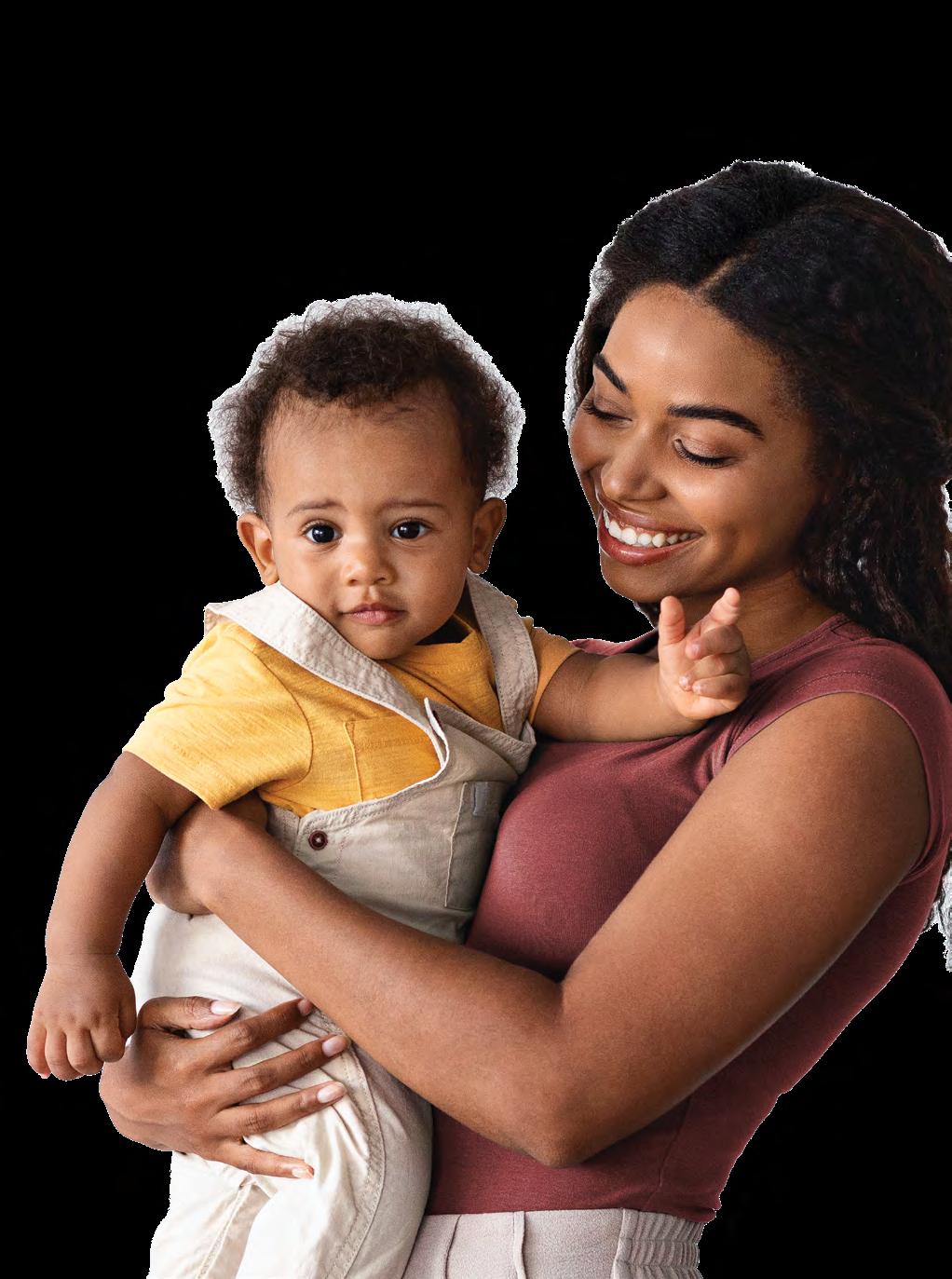
(especially helpful if you’re flying solo).
• Use the restroom and change baby’s diaper right before boarding the plane. It’s tricky to navigate bathroom breaks during flight, especially if baby falls asleep on you (which is the goal).
Pumping tips for breastfeeding moms:
• If you plan to pump, I highly recommend a wearable breast pump. These smaller, battery-operated devices are easier to pack, eliminate the need for cords and bulky equipment, and are discreet enough to pump at your seat. There are many options available, including a more budget-friendly single cup for pumping one side at a time.
• If you can’t get a wearable pump, the next most convenient option is using a cordless, rechargeable pump or pumping in a nursing room or lactation pod at the airport.
• Most major airlines consider a breast pump a medical device, which means it doesn’t count as a carry-on. Pack your pump separately to save space in carry-on bags for other necessities.
• Pack a pump in a bag that also has an insulated compartment for breast milk. Don’t forget frozen ice packs to ensure safe storage temperatures.
• Don’t bother trying to clean pump parts in a tiny airplane bathroom. Wipe everything down with breast pump cleaning wipes and save deep cleaning for your final destination.
Once on board:
• Babies don’t have fully developed immune systems, so it’s a good idea to wipe down your seat, tray table and the seat back in front of you with cleansing wipes.
• The back of an aircraft is often less crowded. It takes longer to get on and off the plane, but there’s a better chance of having an open middle seat or a row to yourself.
• Offer a bottle, breast or pacifier during takeoff and landing. Babies don’t know how to pop their ears; this helps ward off discomfort.
Everything done with a toddler in tow requires a bit of self-grace, and travel is no exception. Some flights with my kiddo are a breeze; others leave me swearing off travel for the next decade. Here are some lessons we’ve learned along the way.
Travel compact. An umbrella stroller is lightweight, easy to use, and saves space in vehicles and hotel rooms. Many car rental companies offer car seat rental options, so be sure to inquire.
Depart at night. We like to travel at night, even opting for red-eye flights when available. On the day of travel, we stay very active to wear our kiddo down. Then we give him a bath, put cozy pajamas on, and take a blanket on board. Flying at night means your toddler is more likely to sleep while traveling. This holds true for road trips, too. Wait to hit the road until after dinner and bath time (there’s also usually less traffic at night).
Keep shoes on. As of July 2025, TSA no longer requires shoes to be removed in security lanes.
Pack surprises. I like to have a few new toys or activities handy, but it doesn’t have to cost a fortune. Some of our favorites include Water WOW! and Sticker WOW! on-the-go activity books, suction cup spinners, playdough, mini magnetic tiles and toy airplanes. When we’re not using our bag of travel toys, we share it with friends. They always add a few new items, which is fun to discover on our next trip.
Expect a mess. Wherever there’s a toddler, a mess is sure to follow. Always have hand wipes with you, and use the airsick bags from the seatback pocket in front of you as a small trash bag.
Skip the gadgets (mostly). I’m a sucker for gadgets and I’ve tried a lot of TikTok
“must haves.” Most have been a waste of money and space, but I do highly recommend a car seat tray for road trips. It provides little ones with a desktop for the car, which is great for snacking, activities and playing with toys. Ours doubles as a dry-erase board, which our little guy loves.
Keep calm and ride on. Our son loves his hardshell ride-on suitcase! We still bring a stroller for when he’s tired or when we’re not at the airport.
Avoid sugar. On one memorable flight, my toddler was crying loudly before takeoff when a lovely, well-meaning flight attendant appeared with snacksized servings of OREOs. Against my better judgement, I let him chow down. While the treat stopped his tears, the rest of the flight was spent trying to quell a sugared-up, overly tired 2-yearold. Never again.
Bring healthy snacks. Pack an array of (non-sugary) snacks your toddler enjoys and put them in a container that allows him to see the entire assortment. Providing toddlers with choices gives them a sense of autonomy and control, and it reduces power struggles. Chewing helps with ear discomfort during airplane ascent and decent. Gummy snacks work well.
Find a balance. I try to leave the tablet as my last resort, but I also believe in picking my battles. Most airlines have options for free games, movies and TV, but if your kid has a favorite, be sure to download it beforehand. Don’t forget headphones! We’ve tried them all; the only pair my son will wear are wired Paw Patrol headphones, complete with puppy ears.
Travel is a wonderful way to make memories with people we love. Enjoy the journey, go with the flow and make the most of each moment. After all, today becomes tomorrow all too fast. v
Jennifer Garcia is a photographer and freelance writer in East San Diego County. When she’s not traveling with her husband and toddler, she’s often thrifting, crafting or baking.


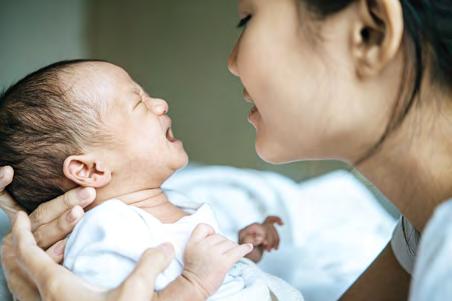
Preparing for what happens after baby comes is often overlooked. As a labor and delivery nurse, I’m here to say that preparing for birth also means preparing for postpartum. Whether it’s mental health, pelvic floor, bleeding, breastfeeding, bottle feeding or something else, learning about postpartum care and establishing support in advance will help you get care in a timely manner. Here are suggestions on what to do during pregnancy to prepare for postpartum and what to do once baby arrives.
Stock the freezer with easy-to-heat, nourishing meals. Whether you cook them yourself, get a loved one to do it, or load up in the grocery store freezer aisle, your postpartum self will thank you.
Gather postpartum essentials. At minimum, consider good pads for bleeding, witch hazel pads and padsicles (maxi pads in the freezer). Other products that help minimize discomfort are numbing spray, stool softeners and a postpartum compression garment.
Gather breastfeeding essentials: Nipple cream, a nursing pillow and breast pads are a solid start.
Establish a safe sleep space for baby in your room (in addition to the nursery). Room-sharing (not bed-sharing) is recommended by the American Academy of Pediatrics for the first 6–12 months.
Establish support systems. Be intentional about setting up support in advance.
Liesel Teen, BSN, RN
Look online (or ask around) for new mom support groups in your neighborhood, lactation support groups, and baby & me classes. If your “village” hasn’t come knocking yet, ask a friend to set up a meal train for you during the first few weeks postpartum. People genuinely want to help, so let them.
Educate yourself. Familiarizing yourself in advance with signs and symptoms of the baby blues, postpartum depression, postpartum anxiety and postpartum rage can make a huge difference during the postpartum period.
Take a break. Your mental health is important as you transition into this new parenting role. Whether it’s reading, meditating, taking a walk outside or exercising, make sure you carve out a little time for yourself each day. Some days it may only be five extra minutes in the shower.
Rest, recharge, repeat. Easier said than done with a newborn, but your body simply cannot heal without rest. Find time to regularly rest and recharge during postpartum recovery.
Fuel yourself. Your body needs nourishment to properly heal. You just spent nine months nourishing a little human, now it’s time to replenish your body with good nutrients (fruits, veggies, lean protein) and hydration. Talk about feelings. You might feel like you are on an emotional rollercoaster after giving birth. Lack of sleep, significant hormone shifts, pain, discomfort, caring for a newborn—it’s
a lot. Don’t keep difficult feelings to yourself.
Embrace the mess. Household responsibilities may be neglected temporarily, but postpartum will be easier if you can give yourself some grace and embrace the mess. Priorities should be your recovery and loving on that sweet baby.
Prioritize pelvic floor health. Kegels, Kegels, Kegels. It doesn’t matter if you had a vaginal birth or a C-section, pelvic floor health is really important as it impacts the muscles, ligaments and connective tissues that support your pelvic organs. Consult your healthcare provider or a pelvic floor physical therapist, if needed.
Keep postpartum appointments. Postpartum checkups are essential for physical and emotional well-being. Your healthcare provider will monitor healing, address physical concerns, screen for postpartum depression, discuss future family planning, and answer questions about recovery, baby care or breastfeeding. v
Get more information about pelvic floor health, recovery from C-section, postpartum essentials and more at www.mommylabornurse.com.
Liesel Teen, BSN, RN, is a labor and delivery nurse and mom of two. Follow her on IG @mommy.labornurse for education, tips and all things pregnancy, birth and postpartum.

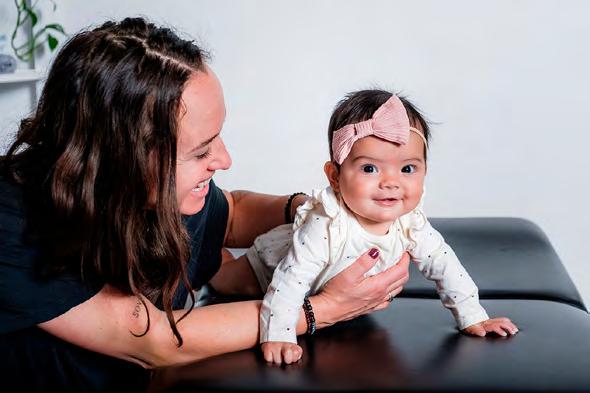
A calm baby means a calm home. We help babies and families thrive through gentle and specialized nervous system focused chiropractic care for:
• Latch and breastfeeding challenges
• Colic
• Constipation
• Birth trauma
• Flat head shape
• Developmental support
Our comprehensive intake includes a full health history, neurological exam, INSiGHT™ stress scans, a personalized care plan, and your baby’s first gentle adjustment.
Get $100 off your intake appointment when you use promo code San Diego Babies online or mention it when you call.

A round-up of some of our favorite baby and toddler products. Find more at www.sandiegofamily.com/parenting/toddler and www.sandiegofamily.com/parenting/baby/baby-product-review.
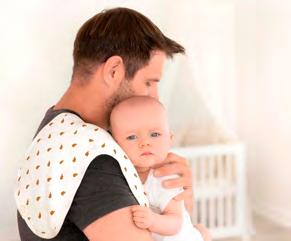
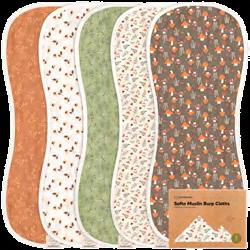
Lumi Muslin Burp Cloths (5-pack)
$24.96; KeaBabies.com
Generously sized burp cloths feature ultra-soft, organic bamboo cotton blend that’s gentle on sensitive skin. Many gender-neutral palettes to choose from. Durable and machine washable.
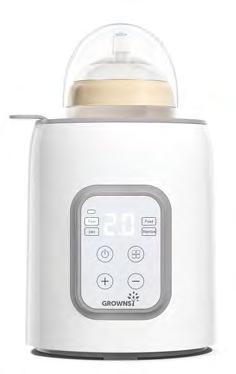
GROWNSY 8-in-1 Bottle Warmer
$49.99; Amazon.com

Pocket Portable Double Electric Breast Pump
$189.99
Evenflofeeding.com
Compact, portable pump includes a rechargeable battery that lasts up to 20 sessions. Tailored for comfort with nine suction and six speed settings. Quiet operation ensures discreet pumping with a belt clip for portability.
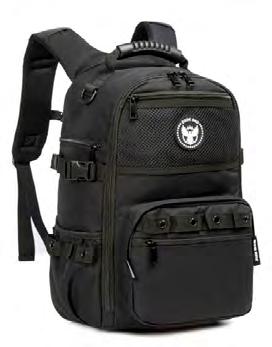
Dude Dad Diaper Bag
$85; DudeDad.com
This bag has everything new dads need, and when baby grows up, it’s still an awesome backpack with reinforced stitching and sturdy handles. Includes wet/dry bag, changing pad, insulated cooler pouch, carabiners and a variety of straps to keep everything secure.
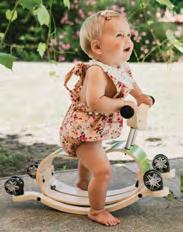
Warms 4 oz milk to a perfect 98.6 degrees in just three minutes. Offers fast warming, thawing, steaming and more. Includes built-in timer and auto shut-off. Compact enough for a nightstand.
Dinosaur Head to Toe Dominoes
$19.99; 3+
eeBoo.com
We love the quality, design and sustainability of products from eeBoo, which uses recycled materials, minimal packaging and vegetable-based inks. These sturdy dominoes develop matching and concentration skills.
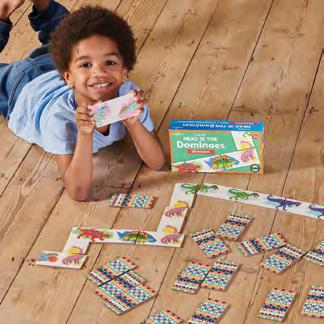
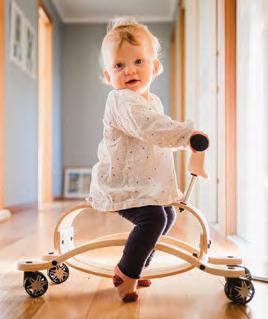
Wishbone Mini-Flip Racer
$149; 1–3 yrs.
WishBoneDesign.com
Ideal for walking toddlers, this ride-on converts from rocker to roller in seconds. Parents love the sustainable, beautiful design.

Prep Silicone Suction Bowls (2-pack)
$18.96; 6–36 mos.
KeaBabies.com
BPA-free, food-grade bowls are safe for microwave, dishwasher and freezer. Perfect for baby-led weaning and selffeeding. Modern design in fun colors.
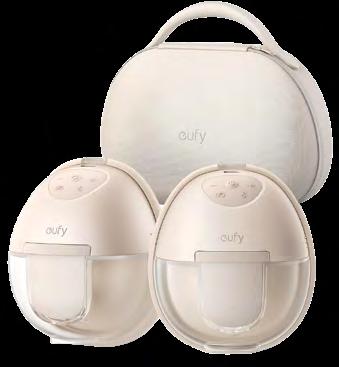
eufy Wearable Breast Pump S1 Pro
$349.99; eufy.com
Innovative HeatFlow technology prevents clogs and warms soft silicone during pumping. Compact, lightweight and leakproof—ideal for discreet in-bra use. Includes wireless charging case.
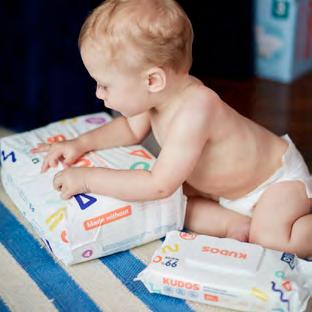
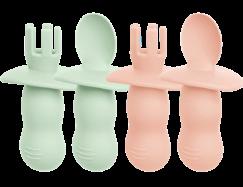
Lil’ Prep Baby Fork & Spoon Set
$11.96; 6–18 mos
KeaBabies.com
Includes four ergonomic, anti-choke utensils made with food-grade, BPA-free silicone. Dishwasher safe.
Original Baby Wrap Carrier
$29.96
0–36 mos.
KeaBabies.com
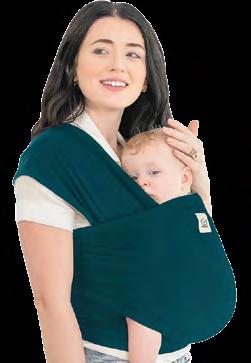
This wrap made of stretchy, breathable fabric allows parents (all body types) to comfortably carry babies 7–35 lbs. while supporting back and shoulders. Many colors/patterns to choose from; includes travel pouch.
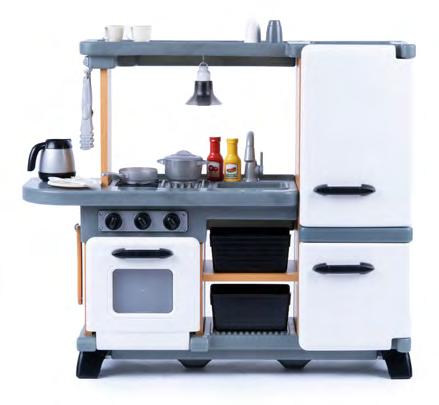
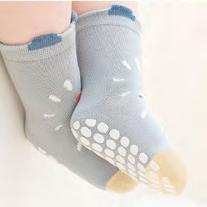
Price varies; 6 mos.–5 yrs. LittleYogaSocks.com
Harmony Play Kitchen
$219.99; 2+ Step2.com
Toddlers enjoy hours of imaginative play with interactive features such as clicker knobs, working light and “sizzling” burner. Modern, sleek design and ample storage for included 25-piece accessory set.

Minimize slipping with grip socks that are not only functional, but come in cute designs that kids love. Available in sets of four or five pairs of socks.
Cotton-Lined, Total Chlorine Free Diapers
Price varies; Mykudos.com
Premium disposables with 100 percent cotton lining, offering superior comfort for sensitive skin. Responsibly made in the U.S. with no irritating plastics or harmful chemicals. DoubleDry tech provides two absorption layers for 12+ hours.
